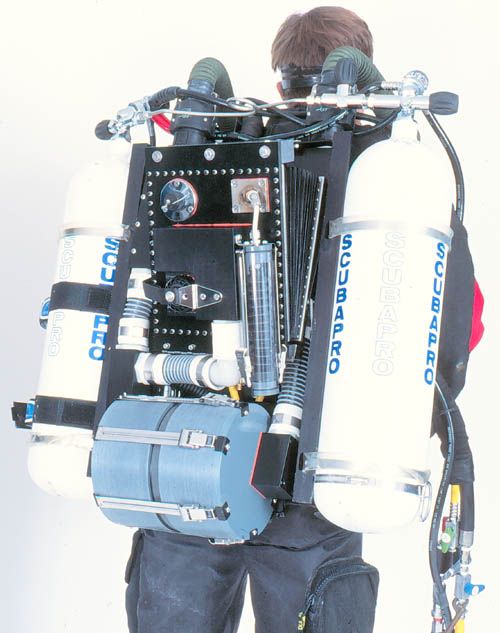Another downside are the shear size and weight, it's not the RB you want to haul around for trips to do photography on shallow reefs. The unit itself can be taken apart and will fit into your luggage, but you'll need a frame of some sort to mount tanks, and of course the tanks themselves which are usually full size. Smaller ones can be used, of course, but cut down the bailout gas supply. It all depends on the profiles and environment/locations you're diving.
Personally for me and the dives I do I would consider the unit too large and bothersome to haul around, and to expensive to justify. Same for the training to be honest. I don't dive mix and don't explore.
Having had a look at two other passive SCRs, the RON and the Habanero, I have to say I do like the latter. The RON is quite similar to the RB80, and the builder actually in many ways shares Halcyon and GUE's philosophy regarding diving and rebreathers. The Habanero on the other hand is also marketed towards recreational profiles and nitrox gases in form of a smaller unit (less scrubber capacity) called Pinquin. Like the RB80 and RON, it has a P-port that allows installation of a pO2 monitor (GUE uses it for training purposes only, no electronics afterwards - one idea I don't share), the tanks are mounted on the unit itself rather than needing a frame of some sort. All of it making it a smaller, lighter, easier to travel with unit. Training/certification is through IANTD, so the quality it depends on the isntructor, but at least you'll have a c-card when or where you need it. The unit itself costs about half of what the RB80 sets you back, and is thus much easier to justify.
But by all means, the RB80 and the GUE training you'll need for it are as good as it gets for the diving the unit is supposed to do. No doubt in my mind about that.
 Any advice on where to even start thinking about what direction to even think about going.
Any advice on where to even start thinking about what direction to even think about going.




